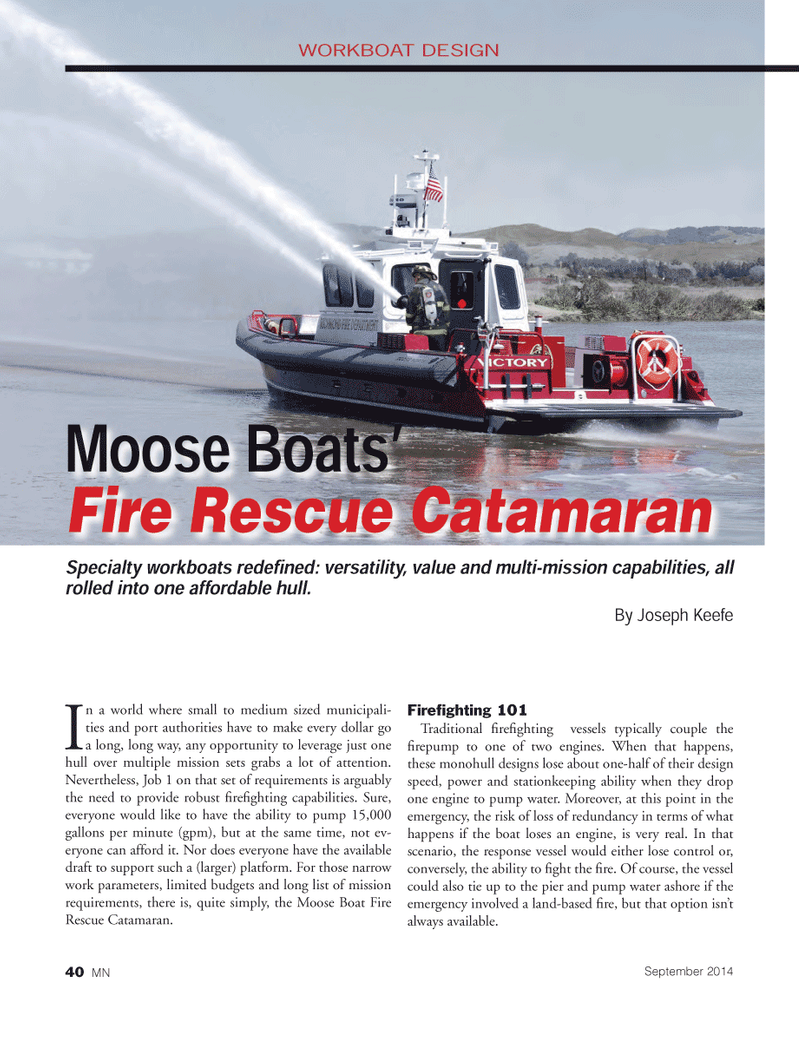
Page 40: of Marine News Magazine (September 2014)
Inland Waterways
Read this page in Pdf, Flash or Html5 edition of September 2014 Marine News Magazine
WORKBOAT DESIGN In a world where small to medium sized municipali- ties and port authorities have to make every dollar go a long, long way, any opportunity to leverage just one hull over multiple mission sets grabs a lot of attention. Nevertheless, Job 1 on that set of requirements is arguably the need to provide robust Þ reÞ ghting capabilities. Sure, everyone would like to have the ability to pump 15,000 gallons per minute (gpm), but at the same time, not ev-eryone can afford it. Nor does everyone have the available draft to support such a (larger) platform. For those narrow work parameters, limited budgets and long list of mission requirements, there is, quite simply, the Moose Boat Fire Rescue Catamaran. FireÞ ghting 101 Traditional Þ reÞ ghting vessels typically couple the Þ repump to one of two engines. When that happens, these monohull designs lose about one-half of their design speed, power and stationkeeping ability when they drop one engine to pump water. Moreover, at this point in the emergency, the risk of loss of redundancy in terms of what happens if the boat loses an engine, is very real. In that scenario, the response vessel would either lose control or, conversely, the ability to Þ ght the Þ re. Of course, the vessel could also tie up to the pier and pump water ashore if the emergency involved a land-based Þ re, but that option isnÕt always available. Moose Boats? Fire Rescue Catamaran Specialty workboats redeÞ ned: versatility, value and multi-mission capabilities, all rolled into one affordable hull. By Joseph Keefe September 201440 MNMN Sept14 Layout 32-49.indd 40MN Sept14 Layout 32-49.indd 408/20/2014 11:38:48 AM8/20/2014 11:38:48 AM

 39
39

 41
41
